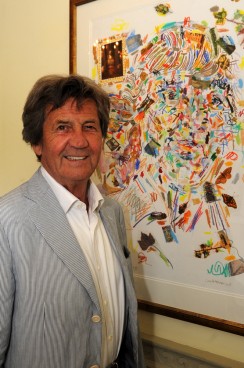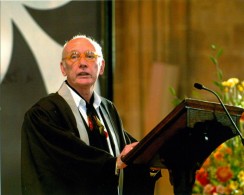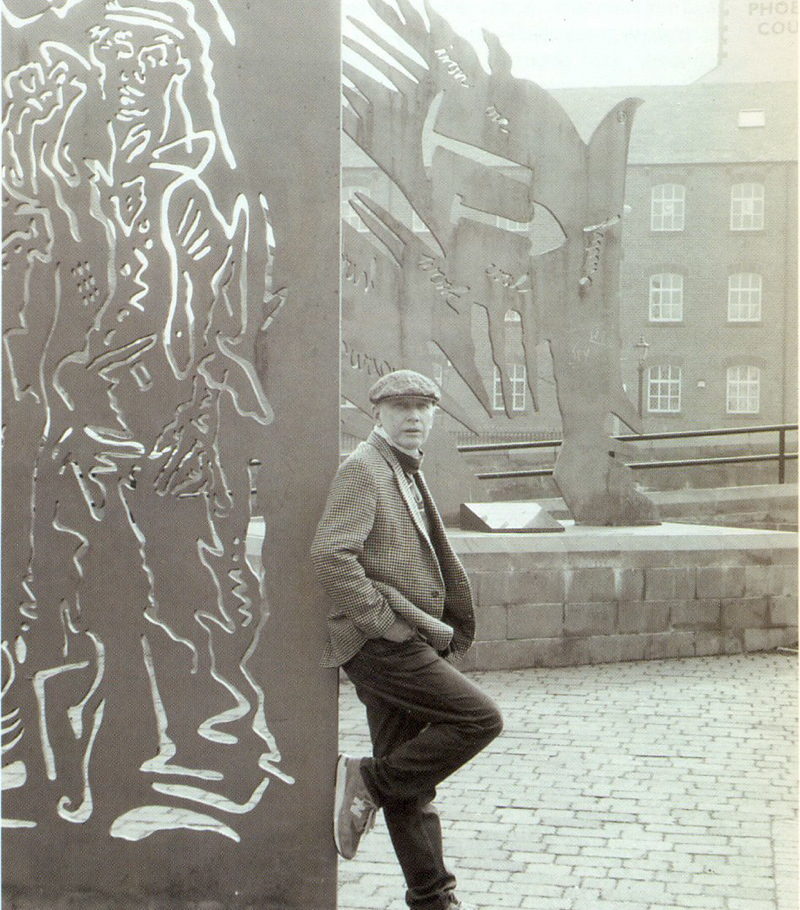Bragging rights
Meet Conrad Atkinson, the artist whose new portrait of Melvyn Bragg underlines his still strong connection to his Cumbrian homeland
Just hearing the name Melvyn Bragg is enough to make you start humming one of the most familiar theme tunes on British television, celloist Julian Lloyd-Webber sawing away at brother Andrew’s composition Variations on the South Bank Show arts programme.
One of the country’s best-known faces also happens to be owned by the programme’s presenter, Melvyn Bragg, and it is clearly Bragg’s visage that shines through a new portrait of him by the controversial artist Conrad Atkinson.
Using multicoloured strokes, swirls and scribbles in oils, pastels and acyrilics Atkinson has produced a bricollage of Bragg in all his lustrious-haired glory, and studded the portrait with giclee-process vignettes that reference the TV presenter and novelist’s roots in the Cumbrian town of Wigton.
Atkinson is also from the county, not from a farming area like Bragg but the gritty coal mining village of Cleator Moor near Whitehaven, and although he has lived in San Francisco since 1992 – he is now professor emeritus of art and art history at the University of California – Atkinson has never severed his connections with Cumbria.

“I met Melvyn at a party in Wigton about 20 years ago,” says Atkinson. “We’re both the same age, 75, and recognised each other as people who’d gone from Cumbria but couldn’t really cut our ties with the place.”
The portrait, currently on show in Kendal, requires prolonged study to identify the symbols of Bragg’s life, such as a sign from the Blackamoor pub where he grew up and an image of Mary Robinson, the shepherdess known as the Maid of Buttermere who was the subject of a Bragg novel of the same name.
A photo of Bragg as a boy taken with his mother appears between finger and thumb, the finger referencing the animated version of Michelangelo’s Sistine Chapel fresco of the Hand of God giving life to Adam, which became the South Bank Show’s icon. And embedded in his thick hair is a quotation from him about the English language being Britain’s greatest contribution to civilisation.
Anyone who has seen Atkinson’s portrait of Gerry Adams, the Sinn Féin president, will note strong similarities with Bragg’s. In a microphone held by Adams, Atkinson inscribed words from Bobby Sands, one of the IRA hunger strikers who died in prison, and when the work was bought by the National Portrait Gallery, the Daily Mail felt the need to point out that Atkinson was a Catholic of Irish descent. But, he says, he was “pressured to leave” Belfast in 1975 by both the IRA and Loyalist paramilitaries after they took offence to an exhibition he staged there.

Atkinson’s CV associates him with numerous events that shaped the zeitgeist of the late 20th century. For instance, he shared a studio with Picasso’s ex-wife Françoise Gilot in New York, while the city’s artist collective known as Group Material took its name from his 1970s work, which is said to have inspired Madonna’s Material Girl.
While at Liverpool Art College in the early 1960s a fellow student was a young musician called John Lennon. “I bought a Victorian wind-up easel off him,” says Atkinson. “He wanted £2 but I knocked him down to 30 shillings. He said he and his group were going off to Hamburg to play, and he was trying to get as much money together as possible. So I helped him get to Hamburg.”
The rest, as they say, is history.
Conrad Atkinson’s portrait of Melvyn Bragg is on display at Abbot Hall Art Gallery (www.abbothall.org.uk), Kendal, until 30 September. Main photo: Conrad Atkinson in Cleator Moor, 1989

Leave a reply
Your email address will not be published.